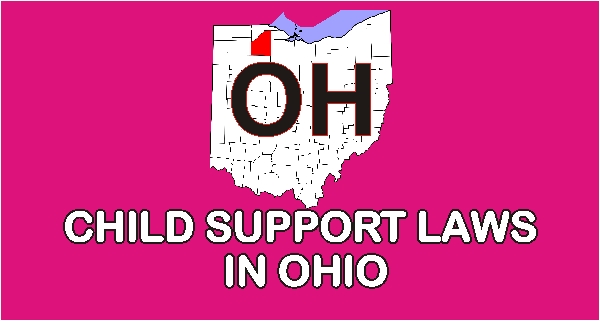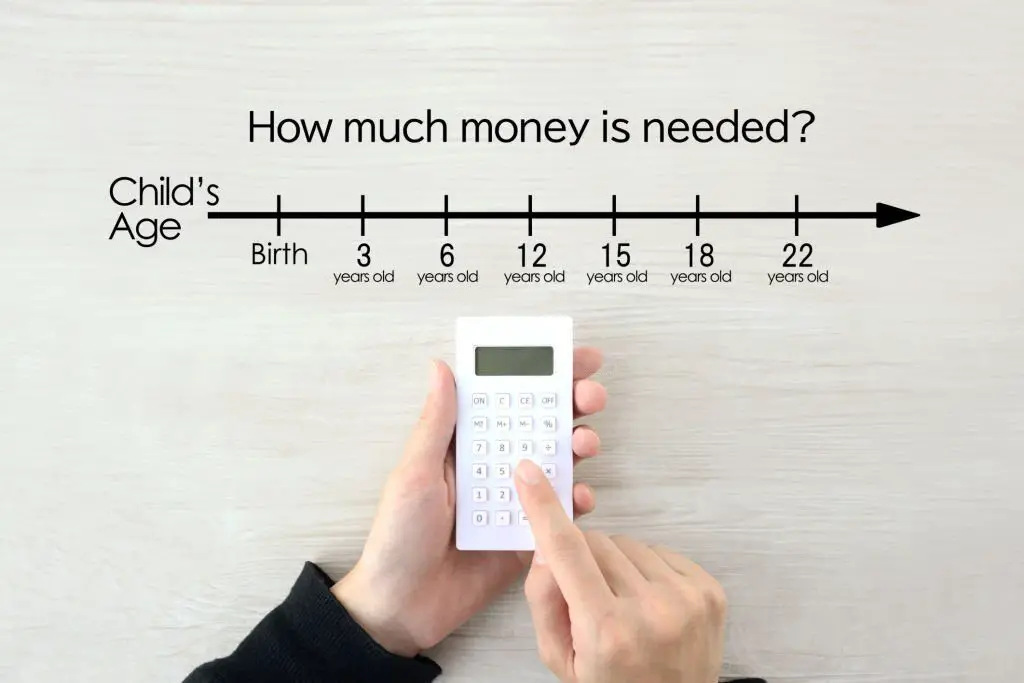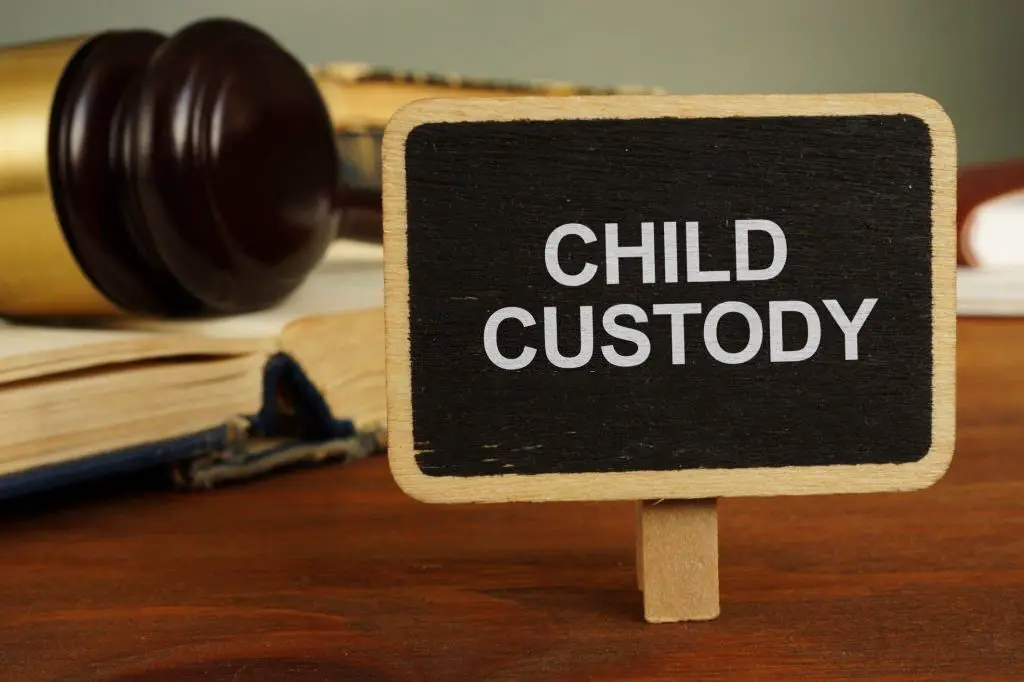
The laws governing child support in Ohio are different from that of other states. OH child support law sets how much the child maintenance should be, and the duration of such payments, plus it seeks to guide parents in exceptional cases such as deviation, support for disabled children, and retroactive support.
As you may already know, child support (or child maintenance) is a continuous monetary payment made by a spouse to another spouse, guardian, caregiver, or the state for the upkeep of children after a divorce or separation.
The person who is required to pay child support is referred to as the “obligor,” whereas the person who is eligible to receive child maintenance is referred to as the “obligee.”
What are OH Child Support Laws?
Ohio child support laws are designed to ensure that children receive the financial support they need to grow and thrive. The Ohio Child Support Program is responsible for enforcing child support orders and collecting payments on behalf of children.
The guidelines are designed to ensure that each parent contributes a fair and appropriate amount of support to the children.
If a parent falls behind on child support payments, the Ohio Child Support Program may take enforcement action, including wage garnishment, interception of tax refunds, suspension of licenses, and other remedies.
What does Child Support Cover in Ohio?
In Ohio, child support is intended to cover the basic needs of children, including food, clothing, shelter, and other necessities. Child support payments are used to help cover the costs of raising children and ensuring that they have a secure and stable environment.
Specifically, child support payments may cover the following expenses:
- Housing: Rent or mortgage payments, property taxes, utilities, and maintenance costs.
- Food: Groceries, meals at home, and meals are eaten outside of the home.
- Clothing: Clothing, shoes, and other personal items necessary for the children.
- Medical expenses: Health insurance premiums, co-pays, deductibles, and other out-of-pocket medical expenses.
- Child care: Daycare expenses or babysitting fees, if needed, to allow a parent to work.
Child Support When One Parent Lives Outside Ohio
To enforce child support orders beyond state boundaries, each state has to have the Uniform Interstate Family Support Act (UIFSA) in place. Ohio is no exception.
The UIFSA ensures that child support processes and procedures are consistent across states. When one spouse lives in another state where the Ohio courts do not have the authority to adjudicate or enforce orders, UIFSA reduces these bottlenecks.
As a result of the UIFSA, an OH child support attorney can take legal action against a spouse who now lives in another state to enforce a child support order.
How is Child Maintenance Calculated In Ohio?

Learn How Child Maintenance Calculated In Ohio
To calculate child maintenance, Ohio uses the OH Income Shares Model/Percentage of Income Model/Melson Formula. This can be done easily using the Ohio Child Support Calculator or Child Support Worksheet.
In Ohio, child support is calculated using the Ohio Child Support Guidelines. These guidelines take into account the income of both parents and the number of children involved and are designed to ensure that each parent contributes a fair and appropriate amount of support to the children.
Steps for Child Support Calculation in Ohio
- Determination of Gross Income a. All forms of income must be included b. This includes wages, salaries, tips, bonuses, and self-employment income c. Gross income is adjusted to reflect deductions for Social Security taxes, federal income taxes, and any other deductions required by law
- Combined Adjusted Gross Income a. The adjusted gross income of both parents is totaled b. The combined adjusted gross income is used to determine the total child support obligation
- Ohio Child Support Guidelines a. The Ohio Child Support Guidelines are used to determine the amount of support b. The guidelines take into account the income of both parents and the number of children involved c. The purpose of the guidelines is to ensure that each parent contributes a fair and appropriate amount of support to the children
- Allocation of Support a. The obligation is divided between the parents based on each parent’s proportionate share of the combined adjusted gross income
- Final Child Support Order a. The amount of support is determined through the guidelines and allocation b. The order is entered as a court order or administrative order and is enforceable by law.
Ohio Child Support Calculator or Worksheet
While a child support calculator can be used to estimate child support, it is not a guarantee of the final amount of child maintenance that the judge will order. A child support worksheet is a form used by the OH courts (or negotiating spouses) to approximate the basic child support obligation of the parents.
Regardless of which approach you use, spouses can decide on a child support sum and amend the worksheet accordingly to ensure it accurately reflects their agreement. Both establish a presumption duty to pay child support.
The final decision on the amount of child support is made by the administrative law judge, administrator, or court.
How Ohio Guidelines are Applied
The OH court will use child support guidelines, which are law-based and are sometimes known simply as “Guidelines. Guidelines establish a fundamental minimum amount of child maintenance, from which the court can differ after considering a variety of considerations.
The criteria are believed to be rational, and a decision of support that conforms to the guidelines is believed to be in the best interest of the child,” according to the guidelines.
The Ohio Guidelines are based on Net Monthly Income. The court also will employ one of two methods after determining Net Monthly Income:
1. The first method applies if an obligor’s net monthly income is less than $7,500.00. The judge will consider the number of children in the household who are the subject of the petition in this case (note that a different calculation applies if an obligor has children in two different households).
2. The second method applies if an obligor’s net monthly income is more than $7,500.00.
Gross Income Included in Calculating Child Maintenance
For child support calculation purposes, gross income includes:
- all wages and salary, including commissions, military pay, tips, overtime, and bonuses
- self-employment income
- interest and dividends
- net rental income from property the parent owns
Even jobless parents are likely to have some sources of income, like:
- severance pay
- unemployment benefits
- retirement benefits
- veterans’ benefits
- disability benefits, or
- workers’ compensation awards.
An OH family court judge may also allocate an income value to parents who do not currently have income-earning employment (like a second house). If a jobless parent inherits assets that can be sold, for instance, the judge may include the property’s market value as a part of such parent’s income.
Where parents willfully go unemployed or underemployed in order to avoid paying child support, judges may infer (assign) income based on what they are supposed to be earning.
Net Income for OH Guidelines

How to determine Net Income for OH child support
Remove the following costs from the total gross income to get the parent’s net income for paying child support in Ohio:
- Social Security taxes, or any mandated retirement plan contributions if the parent does not pay those taxes.
- Income taxes, both federal and state (based on the tax rate for a single person claiming one exemption)
- union dues
- The OH court has ruled the parent to pay the child’s health and dental insurance premiums, as well as additional medical bills.
Parents who have already paid child support for another kid or children (from a previous relationship) may be eligible for a refund.
Is Medical Health Insurance Part of Child Support in Ohio?

Medical Health Insurance and Child Support in Ohio
Yes, in addition to the amount of support determined by the guidelines in Ohio, the parents will be responsible for the child’s health and dental insurance.
Whereas the noncustodial parent is presumed to provide coverage, this can readily be transferred to the other parent if it makes good sense.
For instance, suppose the custodial parent’s employer offers healthcare insurance for the dependent but the noncustodial parent does not.
Factors Ohio Courts Consider Before Ordering Maintenance
The following factors must be considered by the court when determining whether Ohio Family Code applies:
- The age of the child and needs; the parents’ ability to assist
- Financial resources available to the child
- For a set period of time, you have custody and access to a child.
- An increase or decrease in the obligee’s earnings or income due to the obligee’s property and assets
- Childcare expenses incurred by either parent in order to keep a job
- any other children under the care of either party
- Any other children under the care of either party
- What kind of alimony or spousal maintenance is being paid or received;
- Obligor or obligee receives an automobile, house, or other benefits from his or her employer or business entity.
- The parties or the child’s special education, health care, or other expenses
- The cost of traveling to obtain custody of and access to a child.
- Cash flow from any estate and assets, including real estate, personal property, and business property, can be positive or negative.
How to Challenge or Modify Child Support Order
A parent must show that there’s been a substantial change in circumstances in order to alter child support. An Ohio court may consider an alteration if:
- a parent’s employment has been lost,
- migrated to another country,
- Alternatively, if the custody agreement has changed.
Steps for Challenging or Modifying a Child Support Order in Ohio
- Determine Grounds for Modification: The first step in challenging or modifying a child support order is to determine if there is a valid reason to do so. Reasons for modification may include a change in either parent’s circumstances, such as loss of job or change in income, or a change in the needs of the children.
- File a Motion: To initiate the modification process, a motion must be filed with the court. This motion should be filed with the same court that issued the original child support order.
- Provide Evidence: In order to support the motion to modify, evidence of the change in circumstances must be provided to the court. This may include documentation of job loss or change in income or other relevant information.
- Attend a Hearing: After the motion is filed, a hearing will be scheduled. Both parents will have the opportunity to present their case and evidence to the court.
- New Order Issued: If the court finds that a change in circumstances has occurred, it may issue a new child support order that reflects the changed circumstances.
- Continue to Comply with the Order: Until a new order is issued, it is important to continue to comply with the existing child support order. Failure to do so can result in penalties, including wage garnishment and even jail time.
Steps to Collect Child Support in Ohio

Steps to Collect Child Support in Ohio
Getting a child support order in place is only half the struggle in Ohio. You’ll also have to collect the money itself. A noncustodial parent is responsible for paying the full amount of child maintenance per month as imposed by the court. Here are the steps for getting child support in OH
1. Open a Child Support Case
Complete a child support application with your local child support agency/office
2. Locate the Other Parent
To begin the child maintenance procedure in OH, the child support services (CSS) office will use the information provided by the applying parent, as well as information gathered from other sources, to try to locate the other parent.
3. Establish Parentage
It’s critical to establish a legitimate relationship with the child when the other parent has been located. The state will assist you in locating the sufficient means. Parents can choose to acknowledge their parentage voluntarily or organize a genetic screening.
4. Establish a Child Support Order
An Ohio child support order specifies how much the other parent should pay and includes details such as the payment schedule and provisions for the child’s health insurance.
5. Set Up Payment
Deducting child maintenance from a parent’s paycheck and transferring the money to the other parent or guardian is the most typical method of payment. It’s a simple way to make and track child support payments.
6. Enforce the Support Order
Your OH child support services will enforce the child support order if the noncustodial parent does not pay the full amount or does not pay any. Exposing overdue child support payments to credit bureaus, intercepting income tax refunds, and Withholding child maintenance from unemployment or worker’s compensation benefits are examples of other enforcement measures.
7. Review the Order
Three years after the order is issued, either parent can request their local child support office to revise it. They can ask for a reassessment sooner than three years if a parent’s situation has changed significantly, such as loss of employment or imprisonment.
Ohio Child Support Services Office, Number and Login Portal
Office – Office of Child Support | Ohio Department of Job and Family Services
30 E Broad St, Columbus, OH 43215, United States
Phone Number – 1-800-686-1556, +1 614-466-6282
Online Login Portal – jfs.ohio.gov
Retroactive Child Support and Arrears
The consequences of not paying child support orders in Ohio can be very dire. This penalty may include:
- Wage Garnishment: If a parent falls behind on child support payments, the state may garnish their wages. This means that a portion of the parent’s income will be automatically deducted from their paycheck and applied to their child support obligation.
- Driver’s License Suspension: The Ohio Department of Job and Family Services may also seek to suspend the driver’s license of a parent who is behind on child support payments.
- Seizure of Tax Refunds: The state may also intercept tax refunds owed to a parent who is behind on child support payments and apply the funds towards their obligation.
- Credit Report Damage: Child support debt may also be reported to credit bureaus, which can negatively impact the parent’s credit score.
- Contempt of Court: If a parent continues to ignore a court order to pay child support, they may be held in contempt of court. This can result in fines, community service, or even jail time.
- Criminal Non-Support: In extreme cases, a parent who fails to pay child support may be charged with the crime of criminal non-support, which can result in imprisonment.
In order to enforce retroactive child support payments in OH, the custodial parent should do the following:
- File a Motion for Retroactive Support: To enforce retroactive child support payments, the parent seeking support must first file a motion with the court that issued the original child support order. The motion should specify the amount of retroactive support owed and the time period for which the support is being sought.
- Attend a Hearing: The court will schedule a hearing to determine the amount of retroactive support owed. The parent seeking support must attend the hearing and provide evidence to support their claim.
- Obtain a Judgment: If the court determines that retroactive support is owed, it will issue a judgment for the amount owed. The judgment may be enforced through various enforcement mechanisms, such as wage garnishment or seizure of property.
- Work with Child Support Enforcement Agency: The parent seeking support may also work with the Ohio Child Support Enforcement Agency (CSEA) to enforce the retroactive support judgment. The CSEA has various enforcement tools, such as wage garnishment or seizure of property, that it may use to collect the owed support.
If you feel the arrears are being demanded wrongly, you can learn how to get child support arrears dismissed HERE.
How to Pay Child Maintenance in Ohio
In Ohio, parents can pay child maintenance in a variety of ways, as long as your order doesn’t state otherwise:
- by debit or credit card,
- mail,
- check
- bank transfer
- direct deposit
- income withholding, or
- auto-draft from a bank account.
How to Check your Child Support Payment History in OH

How to Check Child Support Payment History in OH
When there are disagreements between the parents and a need to confirm how much money is owed, child support payment records are extremely beneficial.
When Does Child Support End in Ohio?
The Ohio court “may order that one or both parents to support a child until:
- the child is 18 years or finishes high school (whichever comes last),
- the child emancipates by getting married,
- the child’s disabilities are removed, or
- the child dies.
Nevertheless, if the judge determines that the child is disabled (physically or mentally), the child can receive support perpetually.

Understanding Custody Rights of a Child in Ohio
How Does OH Child Support Work if one Parent Has no Job?
- Imputation of Income: If a parent is voluntarily unemployed or underemployed, the court may impute income to that parent based on their earning potential. This means that the court may set child support based on what the parent could earn, rather than what they are actually earning.
- Unemployment Benefits: If a parent is unable to work due to circumstances beyond their control, such as unemployment, the court may consider unemployment benefits as income when determining child support.
- Child Support Worksheet: Ohio uses a child support worksheet to calculate child support based on the combined income of both parents. If one parent has no job, the court may use a minimum wage or other imputed income to calculate the child support obligation.
- Temporary Assistance: If a parent is unable to pay child support due to a lack of income, they may be eligible for temporary assistance from the state to help them meet their child support obligation.
Is Child Support Tax Deductible in Ohio?
NO. In Ohio, child support payments are neither taxable to the recipient nor tax-deductible by the payer as stated by the IRS. Don’t include child support payments when calculating your gross income to see whether you have to file a tax return.
However, either parent may be eligible for a dependency exemption per child. If the parents can’t agree on who receives the exemption, the judge will set out the terms in a court order.
Getting a Skilled Ohio Child Support Attorney
If you are involved in a family law matter in Ohio, you may have a lot more questions than answers at this moment. You are not alone; Correspondence with members has shown that using the services of specialized child support attorneys saves a lot of hassles and most importantly, ensures you come out as a winner for you and your kid.
If you need to fight your child maintenance cause in OH with confidence, then you’ll need attorneys that are both empathetic and strong.
Luckily, we have compiled a database of these expert child support lawyers and made them available for the convenience of our members. You can reach them at the click of a button for legal advice and representation on child maintenance.
Click Here to Get our Free Ohio Alimony recommendation.
Ohio Resource
- Ohio Child Adoption Guidelines
- Ohio Childcare Guidelines
- Ohio Child Custody and Visitation Guidelines
- Ohio Child Support Guidelines
- Ohio Divorce Guidelines
- Ohio Marital Property Guidelines
- Ohio Spousal Support Guidelines
- How to Check Ohio Child Support Payment History
- Ohio Child Support Calculator
- Ohio Grants and Assistance for Single Mothers
Child Support Laws in all 50 States
A - Alabama | Alaska | Arizona | Arkansas
C - California | Colorado | Connecticut
D-H - Delaware | Florida | Georgia | Hawaii
I - Idaho | Illinois | Indiana | Iowa
K-L - Kansas | Kentucky | Louisiana
M - Maine | Maryland | Massachusetts | Michigan | Minnesota | Mississippi | Missouri | Montana
N - Nebraska | Nevada | New Hampshire | New Jersey | New Mexico | New York | North Carolina | North Dakota
O - Ohio | Oklahoma | Oregon
P-S - Pennsylvania | Rhode Island | South Carolina | South Dakota
T-U - Tennessee | Texas | Utah
V-W - Vermont | Virginia | Washington DC | Washington State | West Virginia | Wisconsin | Wyoming




